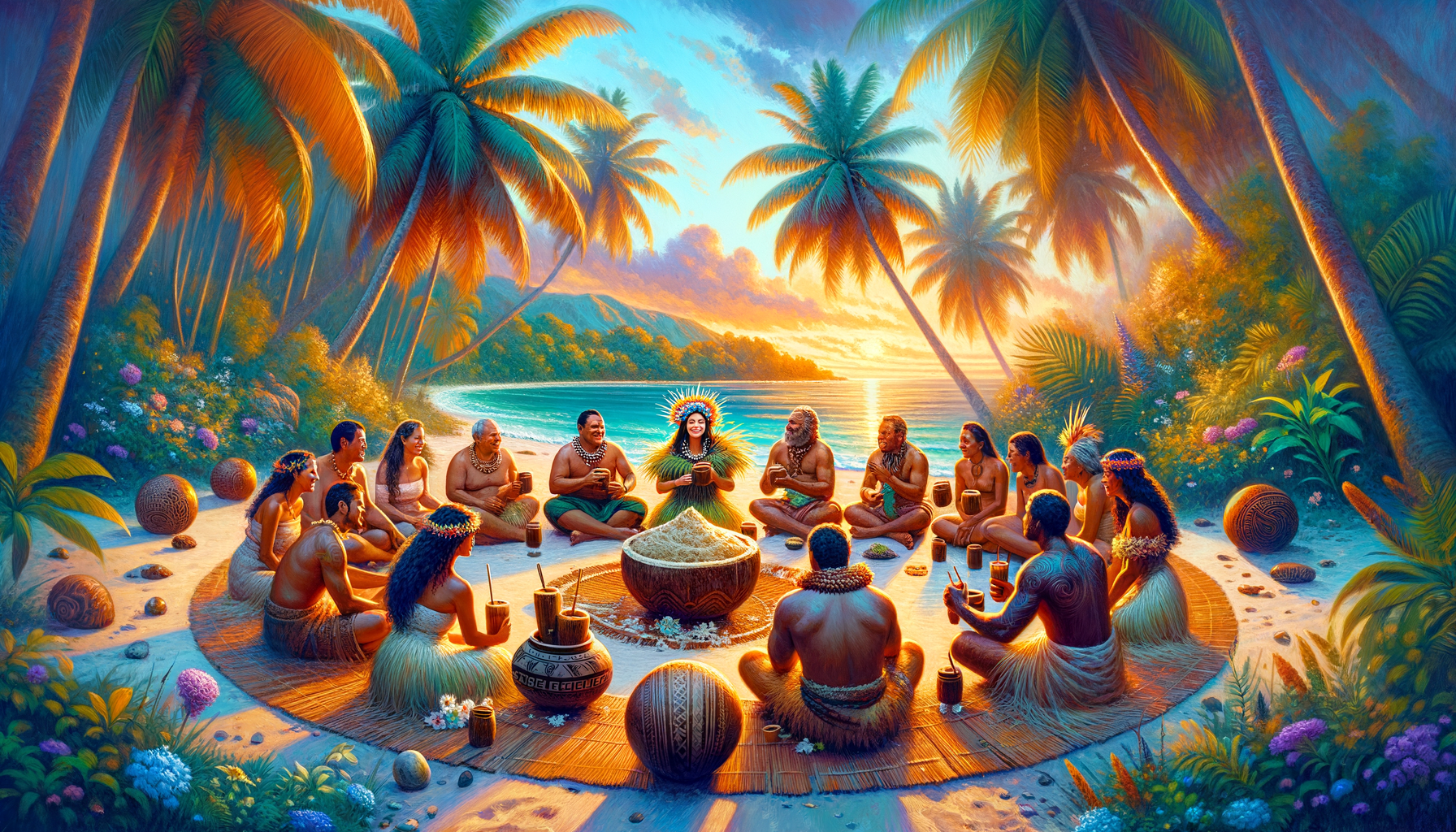Introduction
Imagine a drink that not only tastes good but also has a long history and brings people together. Welcome to the world of kava! This special drink is made from the root of the kava plant. It is known for making you feel calm and has deep roots in the culture of the Pacific Islands. Kava is used in social gatherings, religious ceremonies, or simply for relaxing. Let’s learn about the exciting history and traditions of this amazing drink.
The Origins of Kava in the Pacific Islands
Kava has been around for over 3,000 years in the warm, tropical Pacific Islands. It was first used by the Lapita people, who are the ancestors of the modern Polynesians, Micronesians, and Melanesians. Kava quickly became a big part of their culture. In places like Fiji, Vanuatu, Tonga, and Samoa, kava is very important.
Kava was much more than just a drink. It was a way to bring people together and connect with their spiritual world. People used to drink kava during religious rites, community meetings, and social gatherings. It gave a glimpse into the peaceful lives of these island communities.
Unique Kava Ceremonies of the Pacific Islands
Traditional kava ceremonies are beautiful and show a lot of culture and community. Each island has its special way of preparing and drinking kava, but one thing stays the same: the feeling of togetherness and respect.
Kava in Fiji
In Fiji, kava drinking is part of the "Yaqona" ceremony. People sit in a circle around a large wooden bowl and pass around a half-shell of kava. The person serving the kava, called the "Tanoa," chants to call upon ancestral spirits to bless the gathering.
Kava in Vanuatu
In Vanuatu, they have "Nakamal" gatherings. Men meet at sunset in a place called a "nakamal" (kava bar). They prepare and drink kava to transition from the workday to evening relaxation, often sharing stories and songs.
Kava in Tonga
In Tonga, the "Faikava" is a social event where kava helps people talk, debate, and share stories. Kava brings people together in great cultural unity.
Traditional and Modern Kava Preparation Methods
How is kava prepared? Traditionally, the roots are pounded and ground into a fine powder, mixed with water, and strained through coconut fiber or cloth. The result is an earthy drink that brings calmness.
I remember my first time seeing traditional kava preparation in Vanuatu. During a business trip, my host invited me to a Nakamal gathering. Watching the careful process of pounding the kava roots and mixing it was mesmerizing, a connection to thousands of years of tradition. The final drink was given to me in a half-coconut shell, and with one sip, I felt a deep sense of peace and community.
Kava’s Evolution in Modern Society
Today, kava has embraced the modern world while keeping its rich heritage. Urban kava bars are opening in places like Hawaii and California, mixing old methods with new social trends. These places keep the ceremonial parts and add new flavors to attract more people.
In the Pacific Islands, too, there is a mix of old and new in kava practices. Modern tools have changed traditional preparation methods, making it easier but just as meaningful. Kava continues to be important in social and community events, connecting generations.
Health and Societal Benefits of Kava
For Pacific Islanders, kava is a wonderful root with many health benefits. It has been used to make people feel calm and bring them together in a community.
Modern science supports many of these old beliefs. Studies show that kava can help reduce anxiety, improve sleep, and make socializing easier—much like alcohol but without the bad effects. Kava is a healthier way to relax and socialize because it is non-addictive.
Community stories also highlight kava’s societal benefits. In Fiji, elders talk about how kava has helped mend family ties and solve community problems. It helps keep their society strong and connected.
Personal Stories and Testimonials
Matt Warren, co-founder of the kava drink brand Psychedelic Water, shares his unforgettable experiences with kava. "I was in Tonga," he says, "sitting in a circle of locals, passing around a coconut shell filled with kava. As we drank, stories of ancestors and legends were told. It was deeply grounding. Kava became not just a drink but a way to understand the rich cultures of these islands."
Conclusion
From ancient times to today, kava offers a rich journey of history, community, and relaxation. Whether you are already a kava lover or just curious, experiencing kava gives a special look into Pacific Island traditions.
So next time you sip that calming, earthy drink, remember you are part of a tradition that has been around for thousands of years. It’s a beautiful custom that brings peace and unity to those who enjoy it.
Call to Action
Want to learn more? Check out KavaKist’s selection of top-quality kava products and bring a piece of Pacific Island tradition to your home. Have a kava experience to share or questions to ask? Drop a comment below—we’d love to hear from you! Don’t forget to look at our other articles and upcoming kava events to deepen your understanding and love of this incredible drink.
Keywords:
- kava pacific islands
- traditional kava ceremonies
- kava health benefits
- modern kava bars
- origins of kava

Leave a Reply